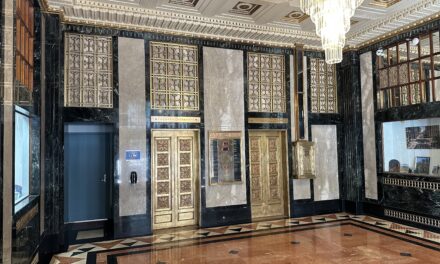Homebuilders in the South (or at least in my part of it) appear to be operating under the old adage: “The higher the hair, the closer to God.”
I was reminded of this recently while working through renovation plans for an existing home in one of Dallas’ suburbs. In addition to the usual kitchen and bath redo, the client was insisting on finding space for a media room. His home in North Carolina had one, and while the new kitchen was nice, having that space to lounge and watch TV was essential. Unfortunately, the existing layout of the house and adjacent pool presented zero options for adding the space.
Until you went into the attic.
Take a drive through some Dallas neighborhoods and the surrounding suburbs, and you can’t help but notice the number of single-story homes with incredibly high-pitched roofs. Somewhere along the route of neighborhood development, builders pulled to the side of the road and started creating homes with roofs taller than the actual living space. And I’ve never really understood the driving factor behind this.
I would like to believe from an architectural perspective this is in response to a design aesthetic. Perhaps these high-pitched roofs somehow stylistically identified these homes, much in the same way we associate steep pitched gables with Tudor roofs or low-slung hip roofs with Prairie-style homes. Except the architecture snob in me has trouble thinking of 1980s-90s tract houses as having a style.
Maybe this is a way to achieve the storage often missing in houses. Most renovation conversations will include a complaint about not having enough storage. Usually this comes up in older properties, but even with more recent homes, there still doesn’t seem to be enough space. However, pop your head into the attic and voila! All the storage space you need.
Or perhaps HVAC contractors convinced home builders a larger attic would provide space for HVAC systems that might otherwise take up precious space in an already crowded floor plan. As an owner of a house built in 1961 with a low-pitched roof, I can certainly see the appeal. Our attic is basically ductwork and nothing else. Woe be to anyone having to actually crawl around up there. I know I’m not about to.
Then again, this could just be a case of “mine-is-bigger-than-yours.” This is Texas after all, where everything is (supposedly) bigger. Again, the higher the hair, although my imagination also flashes to hats during church services on Easter Sunday.
And while any and all of these factors could be driving the high-pitched tendencies in new construction, there is a significant downside (beyond aesthetics). Large attics mean a large volume of space that during the Texas summers can reach upwards of 150 degrees. Great for my HVAC contractor who used crawling around in attics during the summer to work off his winter weight. But not necessarily great for an HVAC system working overtime to combat the rising temps.
On the plus side, however, is the potential for future expansion. I’ve been in more than one attic where we’ve taken advantage of being able to stand upright and walk around. And once we realized we could do the same in his attic, my client was able to get his media room, a small bar, and a powder bath.
And maybe, just maybe, a little closer to God.





